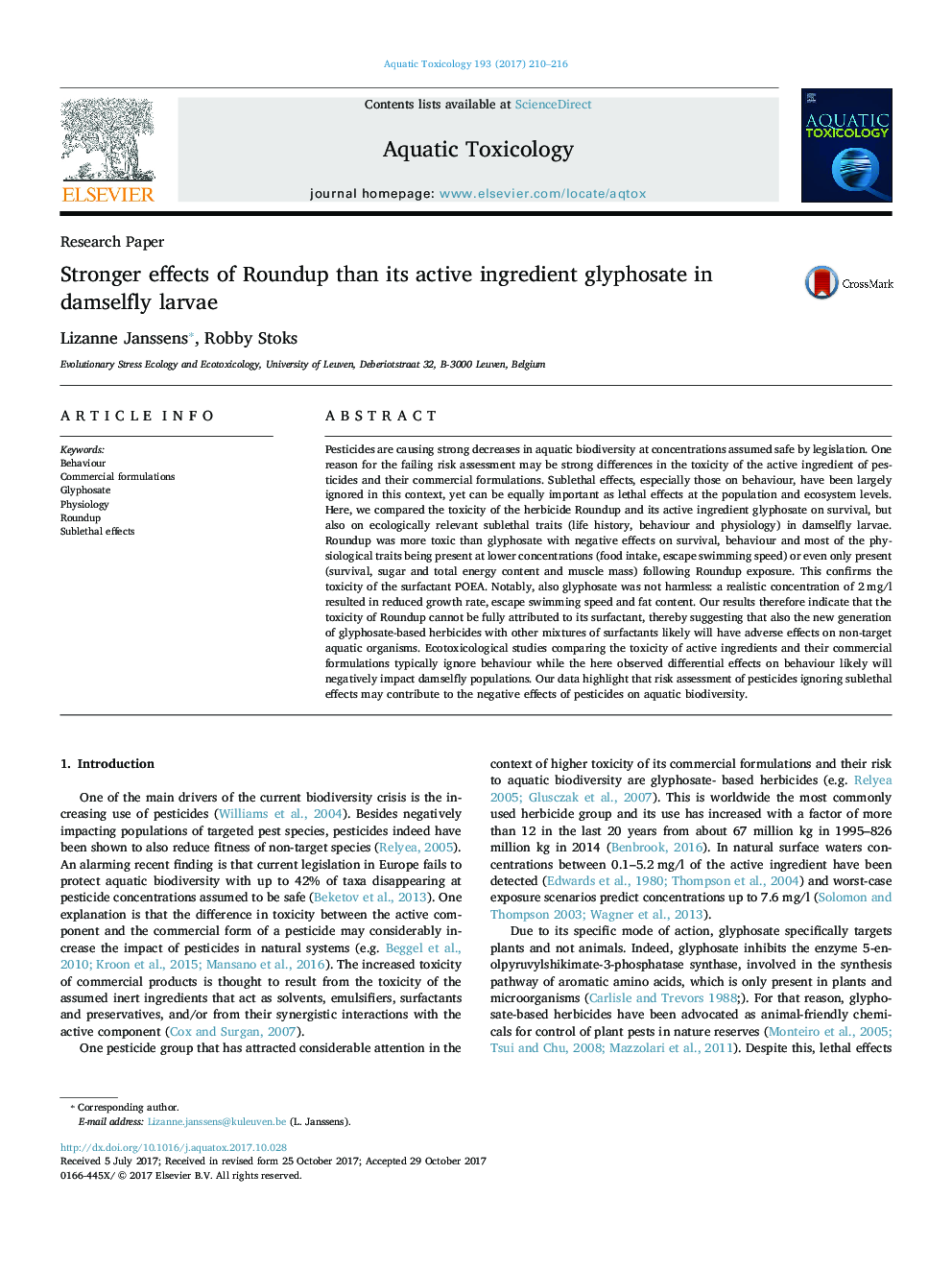| کد مقاله | کد نشریه | سال انتشار | مقاله انگلیسی | نسخه تمام متن |
|---|---|---|---|---|
| 8883950 | 1625912 | 2017 | 7 صفحه PDF | دانلود رایگان |
عنوان انگلیسی مقاله ISI
Stronger effects of Roundup than its active ingredient glyphosate in damselfly larvae
دانلود مقاله + سفارش ترجمه
دانلود مقاله ISI انگلیسی
رایگان برای ایرانیان
کلمات کلیدی
موضوعات مرتبط
علوم زیستی و بیوفناوری
علوم کشاورزی و بیولوژیک
علوم آبزیان
پیش نمایش صفحه اول مقاله

چکیده انگلیسی
Pesticides are causing strong decreases in aquatic biodiversity at concentrations assumed safe by legislation. One reason for the failing risk assessment may be strong differences in the toxicity of the active ingredient of pesticides and their commercial formulations. Sublethal effects, especially those on behaviour, have been largely ignored in this context, yet can be equally important as lethal effects at the population and ecosystem levels. Here, we compared the toxicity of the herbicide Roundup and its active ingredient glyphosate on survival, but also on ecologically relevant sublethal traits (life history, behaviour and physiology) in damselfly larvae. Roundup was more toxic than glyphosate with negative effects on survival, behaviour and most of the physiological traits being present at lower concentrations (food intake, escape swimming speed) or even only present (survival, sugar and total energy content and muscle mass) following Roundup exposure. This confirms the toxicity of the surfactant POEA. Notably, also glyphosate was not harmless: a realistic concentration of 2Â mg/l resulted in reduced growth rate, escape swimming speed and fat content. Our results therefore indicate that the toxicity of Roundup cannot be fully attributed to its surfactant, thereby suggesting that also the new generation of glyphosate-based herbicides with other mixtures of surfactants likely will have adverse effects on non-target aquatic organisms. Ecotoxicological studies comparing the toxicity of active ingredients and their commercial formulations typically ignore behaviour while the here observed differential effects on behaviour likely will negatively impact damselfly populations. Our data highlight that risk assessment of pesticides ignoring sublethal effects may contribute to the negative effects of pesticides on aquatic biodiversity.
ناشر
Database: Elsevier - ScienceDirect (ساینس دایرکت)
Journal: Aquatic Toxicology - Volume 193, December 2017, Pages 210-216
Journal: Aquatic Toxicology - Volume 193, December 2017, Pages 210-216
نویسندگان
Lizanne Janssens, Robby Stoks,